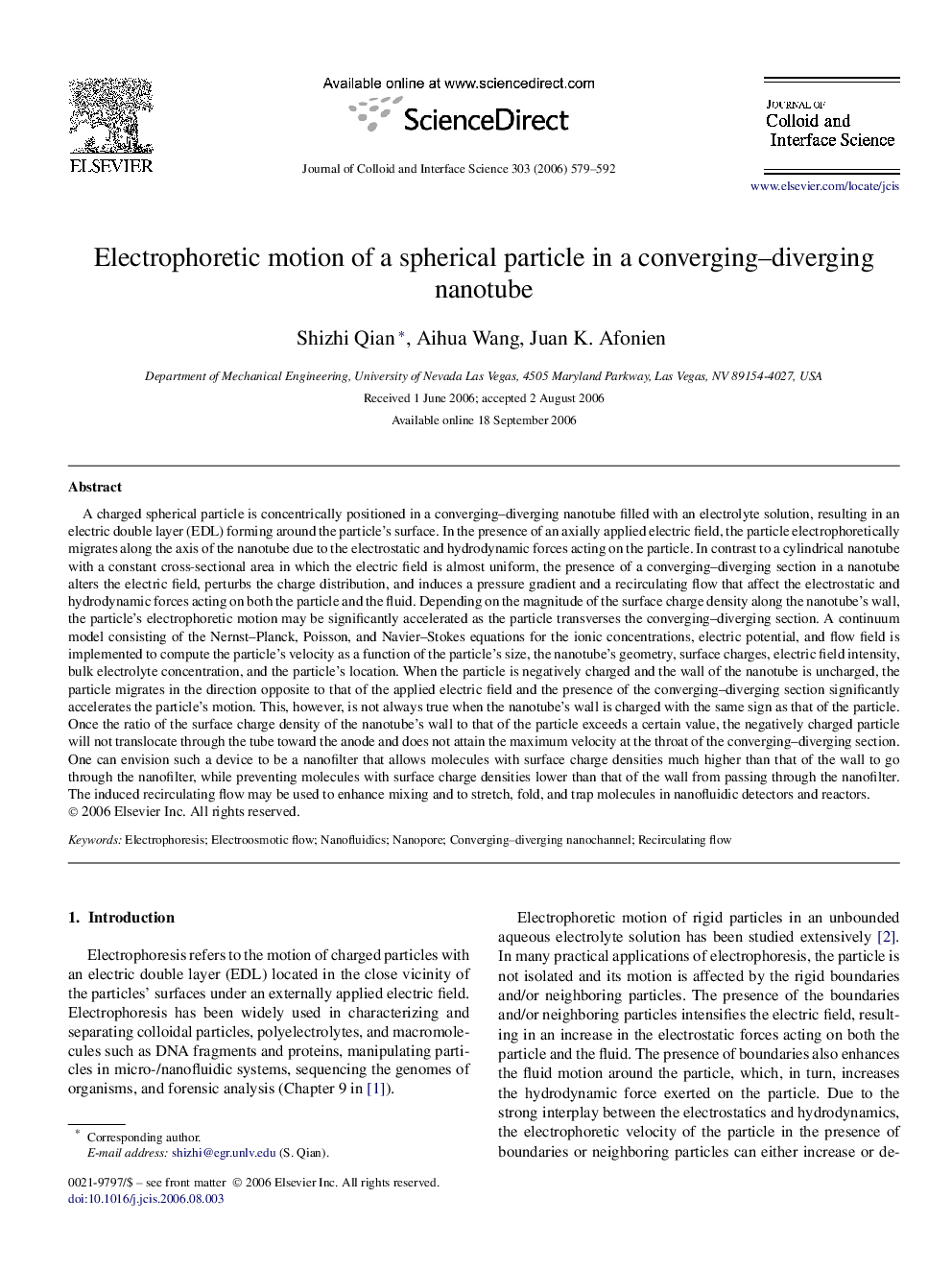| کد مقاله | کد نشریه | سال انتشار | مقاله انگلیسی | نسخه تمام متن |
|---|---|---|---|---|
| 612897 | 880709 | 2006 | 14 صفحه PDF | دانلود رایگان |

A charged spherical particle is concentrically positioned in a converging–diverging nanotube filled with an electrolyte solution, resulting in an electric double layer (EDL) forming around the particle's surface. In the presence of an axially applied electric field, the particle electrophoretically migrates along the axis of the nanotube due to the electrostatic and hydrodynamic forces acting on the particle. In contrast to a cylindrical nanotube with a constant cross-sectional area in which the electric field is almost uniform, the presence of a converging–diverging section in a nanotube alters the electric field, perturbs the charge distribution, and induces a pressure gradient and a recirculating flow that affect the electrostatic and hydrodynamic forces acting on both the particle and the fluid. Depending on the magnitude of the surface charge density along the nanotube's wall, the particle's electrophoretic motion may be significantly accelerated as the particle transverses the converging–diverging section. A continuum model consisting of the Nernst–Planck, Poisson, and Navier–Stokes equations for the ionic concentrations, electric potential, and flow field is implemented to compute the particle's velocity as a function of the particle's size, the nanotube's geometry, surface charges, electric field intensity, bulk electrolyte concentration, and the particle's location. When the particle is negatively charged and the wall of the nanotube is uncharged, the particle migrates in the direction opposite to that of the applied electric field and the presence of the converging–diverging section significantly accelerates the particle's motion. This, however, is not always true when the nanotube's wall is charged with the same sign as that of the particle. Once the ratio of the surface charge density of the nanotube's wall to that of the particle exceeds a certain value, the negatively charged particle will not translocate through the tube toward the anode and does not attain the maximum velocity at the throat of the converging–diverging section. One can envision such a device to be a nanofilter that allows molecules with surface charge densities much higher than that of the wall to go through the nanofilter, while preventing molecules with surface charge densities lower than that of the wall from passing through the nanofilter. The induced recirculating flow may be used to enhance mixing and to stretch, fold, and trap molecules in nanofluidic detectors and reactors.
A converging–diverging section in a nanotube intensifies the electric field, polarizes the EDLs, and induces a pressure gradient and recirculating flow which affects the fluid's motion and particle's electrophoretic motion.Figure optionsDownload as PowerPoint slide
Journal: Journal of Colloid and Interface Science - Volume 303, Issue 2, 15 November 2006, Pages 579–592